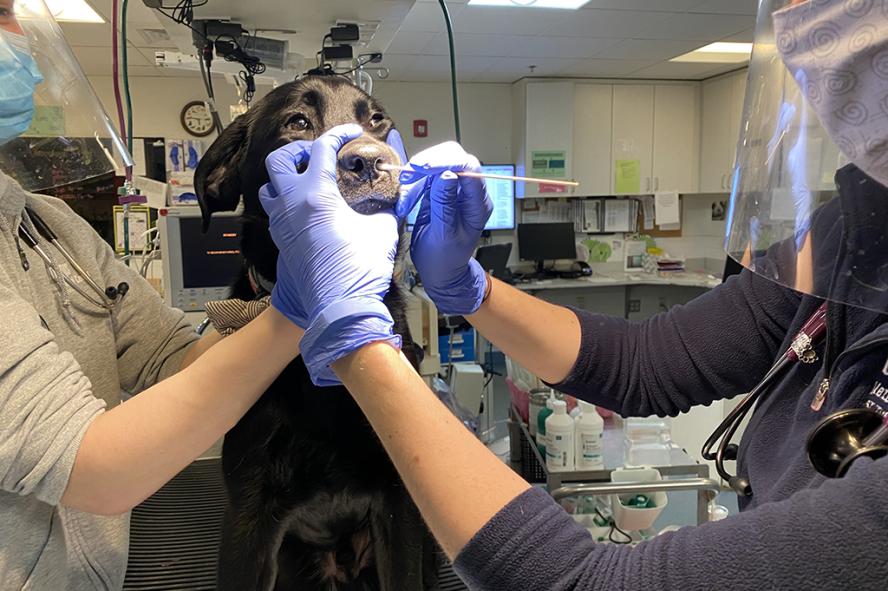-
About
- Leadership & Faculty
- News & Events
-
Academics
- Graduate
- Advanced Clinical Training
- Continuing Education
-
Student Life
-
Research
-
Hospitals & Clinics
- Emergency Care
- Hospital Services
-
Community Outreach
- Volunteer
What Is Behind COVID-19 Spillover Events?
Professor Jonathan Runstadler discusses his lab’s work to investigate genetic mutations and other factors that enable the SARS-CoV-2 virus to jump species.

Like most of us, the faculty and researchers at Cummings School have watched the COVID-19 pandemic develop and spread with a mixture of concern and curiosity.
While none of them were surprised to see a new virus spill over from animals to people, they still have lots of questions about how it’s infecting and affecting people worldwide—and what it will take to bring the U.S. and international outbreak under control.
We asked these experts to share what questions about COVID-19 they’d most like to be able to answer in the months ahead.
Professor Jonathan Runstadler leads a team of Tufts researchers who sample animals in the wild and return to the lab to analyze the samples for influenza viruses. They now have studies underway that they hope will contribute to our understanding of whether domestic animals can get infected with the SARS-CoV-2 virus, the virus that causes COVID-19.
“The priority questions I’d responsibly want to answer is, given exposure, how can you prevent infection with SARS-CoV-2 virus—and how can we prevent severe COVID-19 disease?” said Runstdaler. “Those are the answers we need from a pandemic response standpoint.
However, from the perspective of my interests and those of my Cumming School lab’s research, I’d really like to know by what transmission pathway did SARS-CoV-2 enter the human population—and what genetic mutations were necessary for that path to take place? This is the heart of our attempts to understand zoonotic disease—those that can be transmitted between people and animals—and the threat to human health.
We want to figure out how to better recognize the emergence of infectious viruses such as SARS-CoV-2 before they have the chance to spread from animals to people. Such knowledge would help on the public-health side by identifying changes in human behavior that could help avoid a spillover, and on the treatment and prevention side by being able to preemptively develop vaccines and therapeutics for potential viral threats.”
Read more responses in our “Special Report: Answers Needed About COVID-19” series from Janetrix Hellen Amuguni, Amanda Martinot, Felicia Nutter, Marieke Rosenbaum, Abhineet Sheoran, Charles Shoemaker, Sam Telford, Saul Tzipori, and Chris Whittier.
Department:
Dept. of Infectious Disease and Global Health